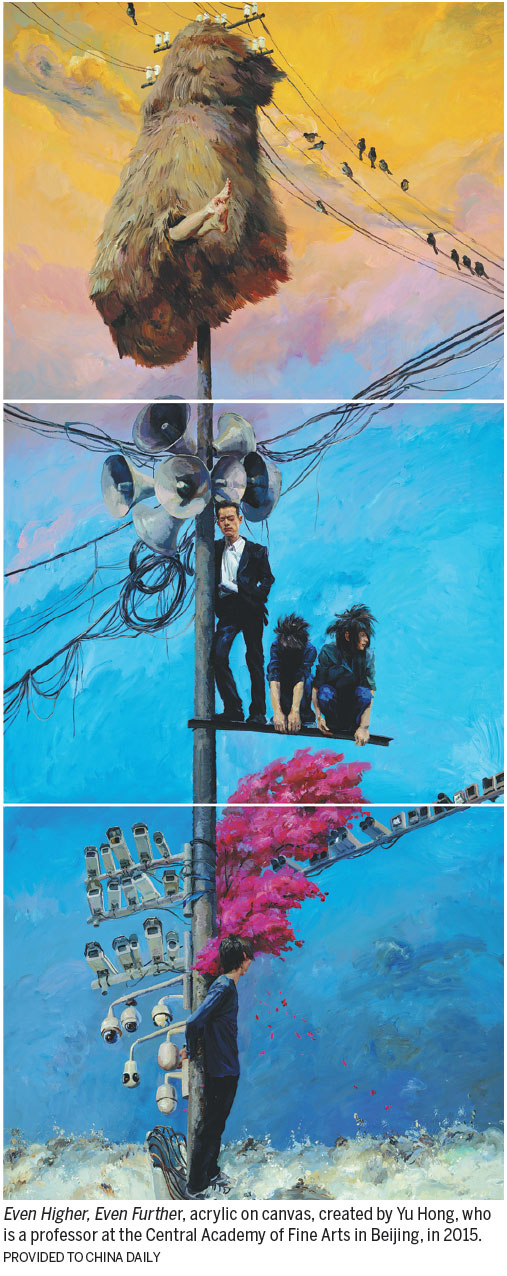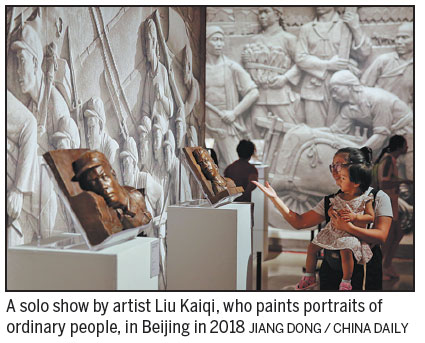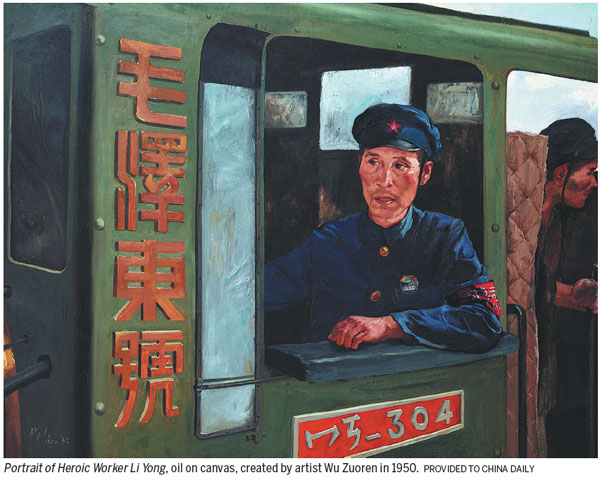The time of their lives
Images depicted by artists reflect dramatic changes in society
Wu Weishan, director of the National Art Museum of China in Beijing, says he loves to stroll around the museum and watch how the audience reacts to the exhibits on show.

"People visit museums to enjoy beautiful works of art. For me, the sight of people coming to the museum is more beautiful than any of the works on display," Wu says.
A prominent sculptor in his own right, Wu initiated a program in 2017 to invite people from different walks of life - teachers, scientists, farmers and military veterans - to come to the museum and sit as "role models" for portraits by Wu and a group of other sculptors.
The resulting works have been periodically exhibited in public.
Wu says the role of ordinary people has always been one of the subjects central to the creation of Chinese art over the past seven decades.
The range of images of people depicted by artists have become increasingly diverse over the years, reflecting the dramatic changes in Chinese society, and are apparent in the iconic works on display in the collections of museums and important public exhibitions - such as the National Exhibition of Fine Arts, which has been held for 12 sessions since 1949.
And this realistic approach has also been at the heart of the evolution in the artworks that portray the day-today lives and mentality of ordinary Chinese people.
Zheng Gong, an academician at the Chinese National Academy of Arts, says that when people think about the art created between the 1950s and '70s, the paintings and posters that often spring to mind are works depicting workers, farmers and soldiers - the primary figures that represent the country's push for social development after decades of war and chaos.
"Their physical gestures, facial expressions, outfits and the tools they used are relatively fixed and meaningful, and they became revered cultural symbols of their time.
"For example, when artists depicted a member of New China's working classes, the subject would often have a wide chest, powerful arms and be dressed in uniform overalls, and set against the backdrop of an expansive landscape. Taken together, these elements combine to suggest a spirit of advancement, dedication and a shared sense of responsibility," Zheng says.
The repeated portrayal of these laborers in the many artworks of the period tapped into the public hope for a new kind of society as New China marched toward to industrialization. As well as presenting a modern face for the young country, the compositions were so vivid and full of detail from everyday life that they immediately resonated with their audience, while at the same time offering a poetic touch borrowed from the traditions of Chinese art.
Throughout the 1980s, scientists and technicians shared the limelight in art creation, as they played an even greater role after China's reform and opening-up process began. And now as the country continues on its path of rapid development and people are engaging in a wider range of occupations, younger generations of homegrown artists are being inspired to venture into new mediums of art other than painting or sculpture.
Through their work, artists are now not only dwelling on the grand historic narrative, but are also tending to focus on the individual experiences and emotions of the working classes.
"They no longer seek to depict the perfect role model," Zheng says. "They primarily care about the natural, genuine and industrious aspects of the kinds of people in society who are not necessarily looking to carve out a successful career of their own."
Many of the works submitted for the 13th National Exhibition of Fine Arts, which opens in Beijing at the end of the year, focus on express delivery drivers and restaurant waiters. This trend reflects the growth of China's service industry and how reliant people have become in the country's increasingly urban landscape on the large numbers of rural migrant workers.
Xin Dongwang, the late leading portrait painter, was best known for his profiles of grassroots Chinese people - and especially those who migrated to the city from the countryside as he had - who were determined to follow their dreams of building a better life.
Xin once said: "I hope that my paintings embrace a humanist spirit. And I hope that my paintings reflect the temperament of my nation."
Beijing-based art critic Zhang Xiaoling says Xin's works evoke a sense of sadness for people who work so hard to gain so little, yet still dream of a better tomorrow.
"Xin's works deliver an honesty and genuineness that deeply touches people's souls," Zhang says. "What he painted are the faces of the real China."
Contact the writer at linqi@chinadaily.com.cn



(China Daily 09/30/2019 page47)














